Affiliate links on Android Authority may earn us a commission. Learn more.
LG V50 ThinQ review: An affordable 5G entry point
Published onDecember 19, 2019
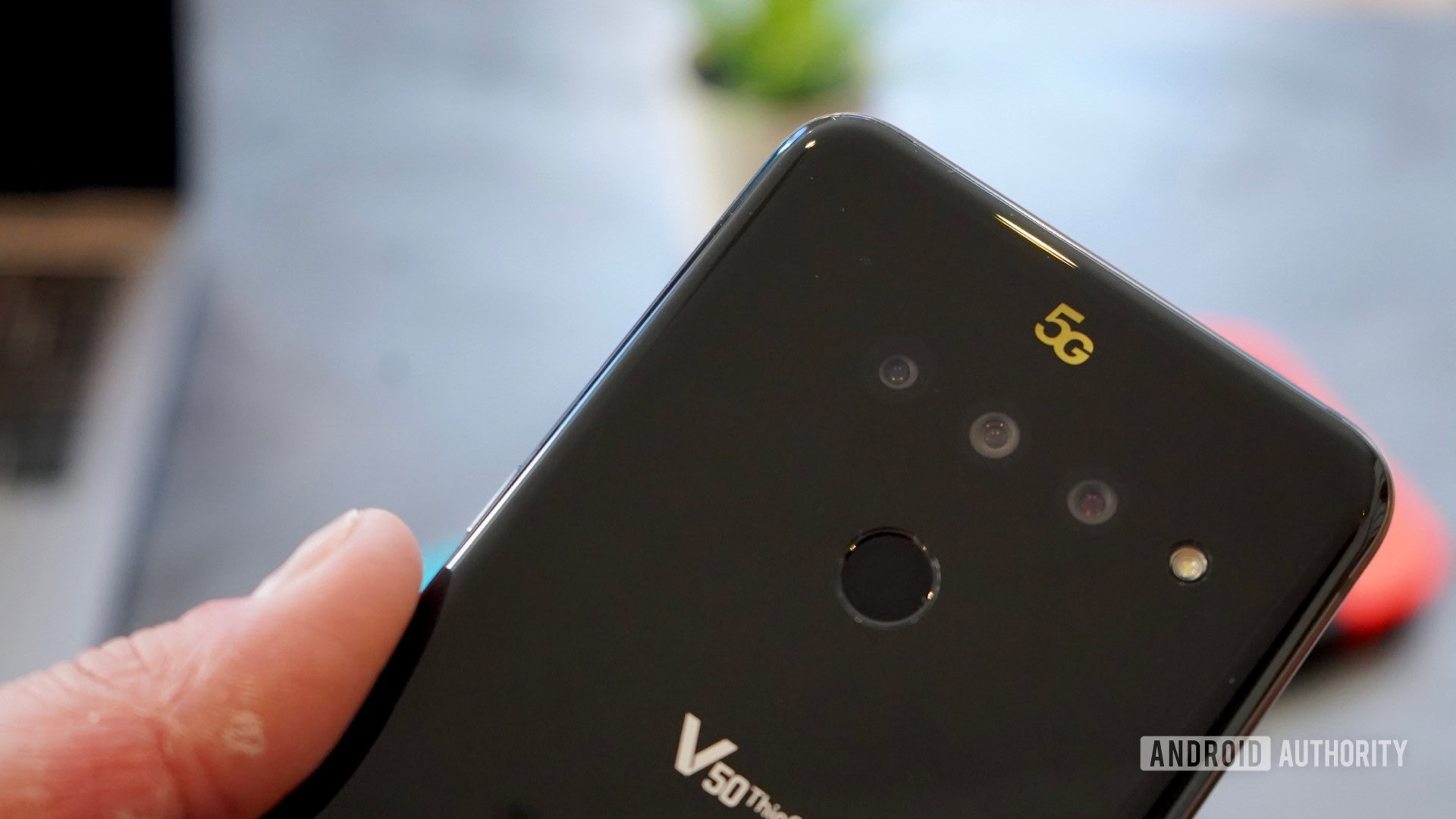
As we resolutely cross the threshold into the 5G era, there are a wave of “firsts” popping up in the market. The LG V50 ThinQ, for example, is the first Sprint 5G smartphone. The V50 is a warmed-over upgrade to last year’s V40, with 5G serving as the primary feature. Sprint’s 5G network provides more access than competitors AT&T and Verizon do at the moment, but that may change over time.
Is the LG V50 ThinQ worth the 5G premium? What if you don’t live in a Sprint 5G market? We answer these and other questions in Android Authority‘s LG V50 ThinQ review.
LG V50 ThinQ review: The big picture
If you want to own one of the first 5G phones, your selection is really limited. You’ve got the Samsung Galaxy S10 5G on Verizon, AT&T (business customers only), Sprint, and T-Mobile, and the LG V50 ThinQ on Sprint. These are the only phones with 5G built-in, and you’d better believe they’re premium devices that command top dollar. If you’re a Verizon customer on a budget, you can slap the 5G Mod onto either the Moto Z3 or Moto Z4, neither of which has native 5G. It’s widely believed the Samsung Galaxy Note 10 will come in a 5G variant when it launches in August.
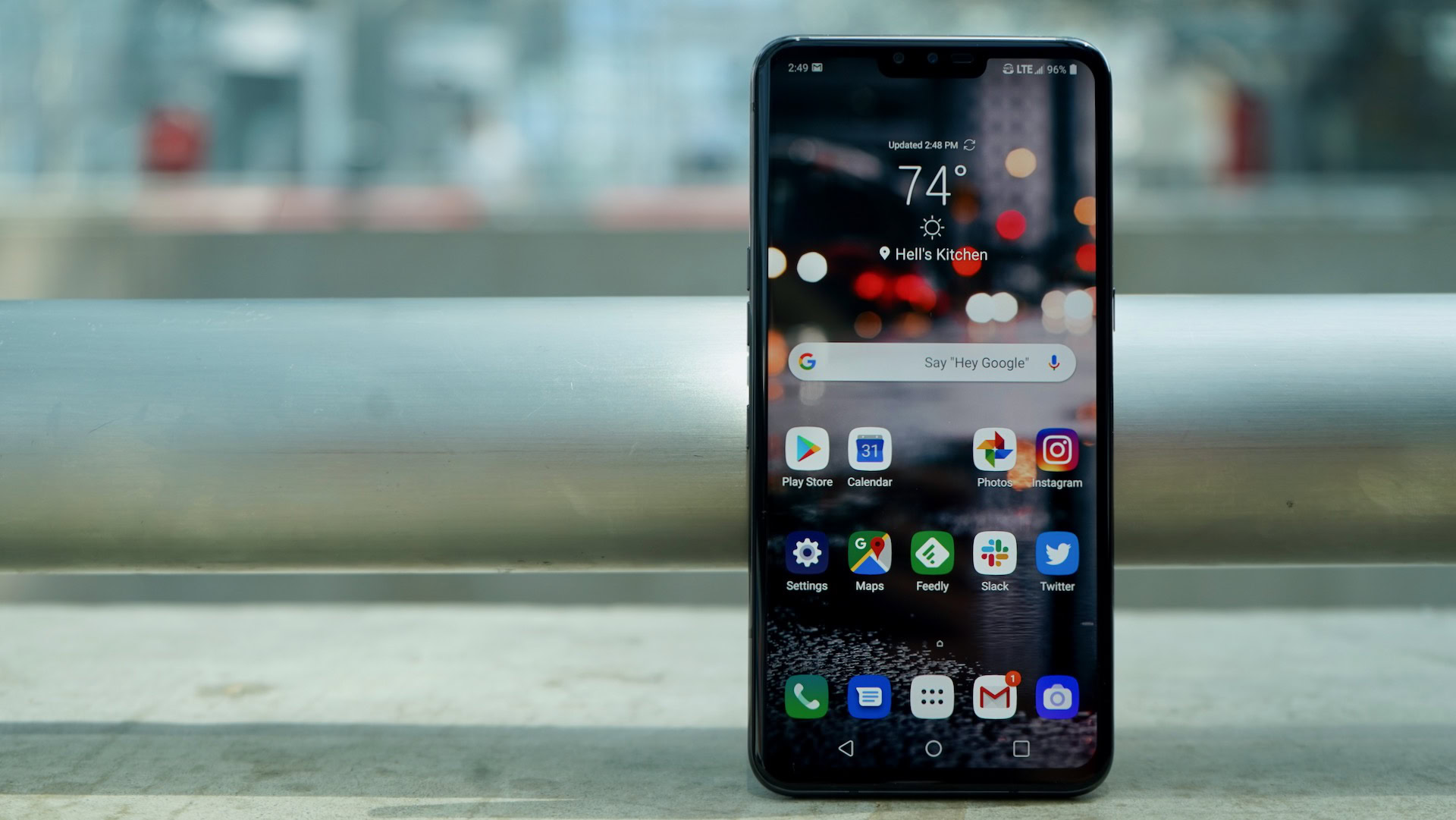
The V50 ThinQ is LG’s flagship phone and it goes head-to-head with Samsung. It’s a hearty offering, packed with technology. In addition to 5G, remember that the V-branded devices are LG’s media-focused series, with extra camera, video, and audio features in tow for capturing the highest-quality content.
Cramming so much into a single chassis is a tall order. Let’s dive into our LG V50 ThinQ review to see if LG made it all work.
Where is Sprint 5G available?
Sprint 5G service is currently available in Atlanta, Chicago, Dallas-Fort Worth, Houston, and Kansas City. It has also launched in Los Angeles, New York City, Phoenix, and Washington, D.C..
What’s in the box
- Quick Charge 3.0 charger
- USB-A to USB-C cable
- 3.5mm earbuds
- Microfiber cloth
LG kept the box contents simple and straightforward. In addition to the V50 ThinQ, you’ll find a high-speed wall plug, cable, earbuds, and a polishing cloth. I am happy to see the 3.5mm-equipped headphones, even if they don’t carry a brand anyone would recognize. There are no adapters in the box, nor is there even a simple case.
Design
- 159 x 77 x 8.4mm, 183g
- Gorilla Glass 5
- 3.5mm headphone jack
- MicroSD expandable storage
LG has not made a truly distinctive smartphone in what feels like years. Sure, the V50 ThinQ is a sultry black glass slab, with aluminum providing the frame, but the simple lines and generic curves lack bravado. The phone is almost indistinguishable from last year’s V40.
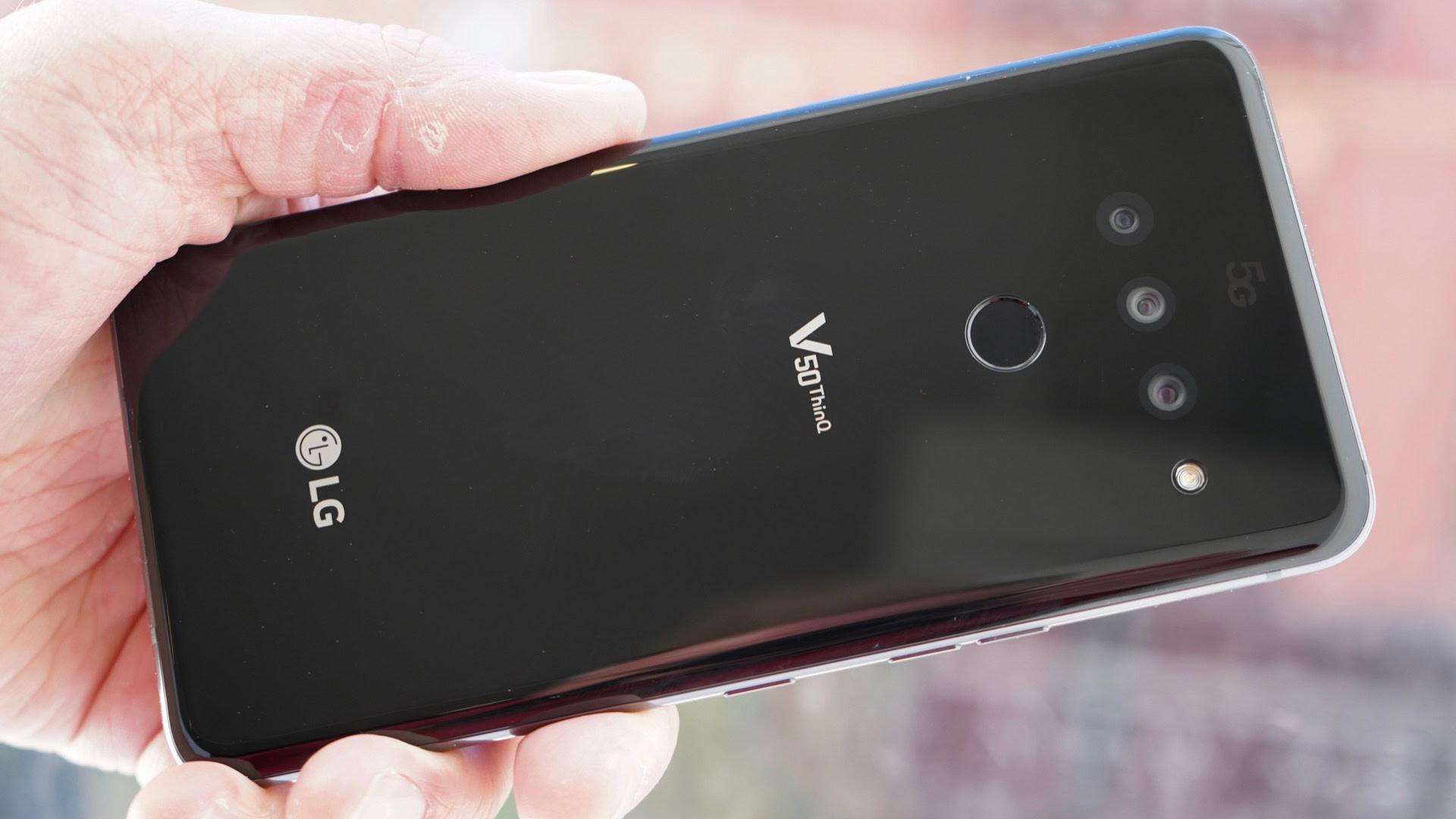
The major differences are these: The rear panel glass is curved on all four sides where it meets the frame. I like this. And the camera module is now entirely flush with glass (similar to the LG G8 ThinQ), creating a seamless surface. I like this, too. Everything else about the phone is more or less identical to its predecessor.
LG covers the flagship basics. Gorilla Glass 5 is front and back. The phone meets MIL-STD 810G for durability, but I’m not going to be the one to throw it down a set of stairs to test that rating. The V50 scores IP68 for protection against water. Indeed, I put the phone in a bucket of water and it came out none the worse for being wet. This means you can sweat on it, spill on it, and accidentally drop it in the pool, but don’t leave it at the bottom for too long.
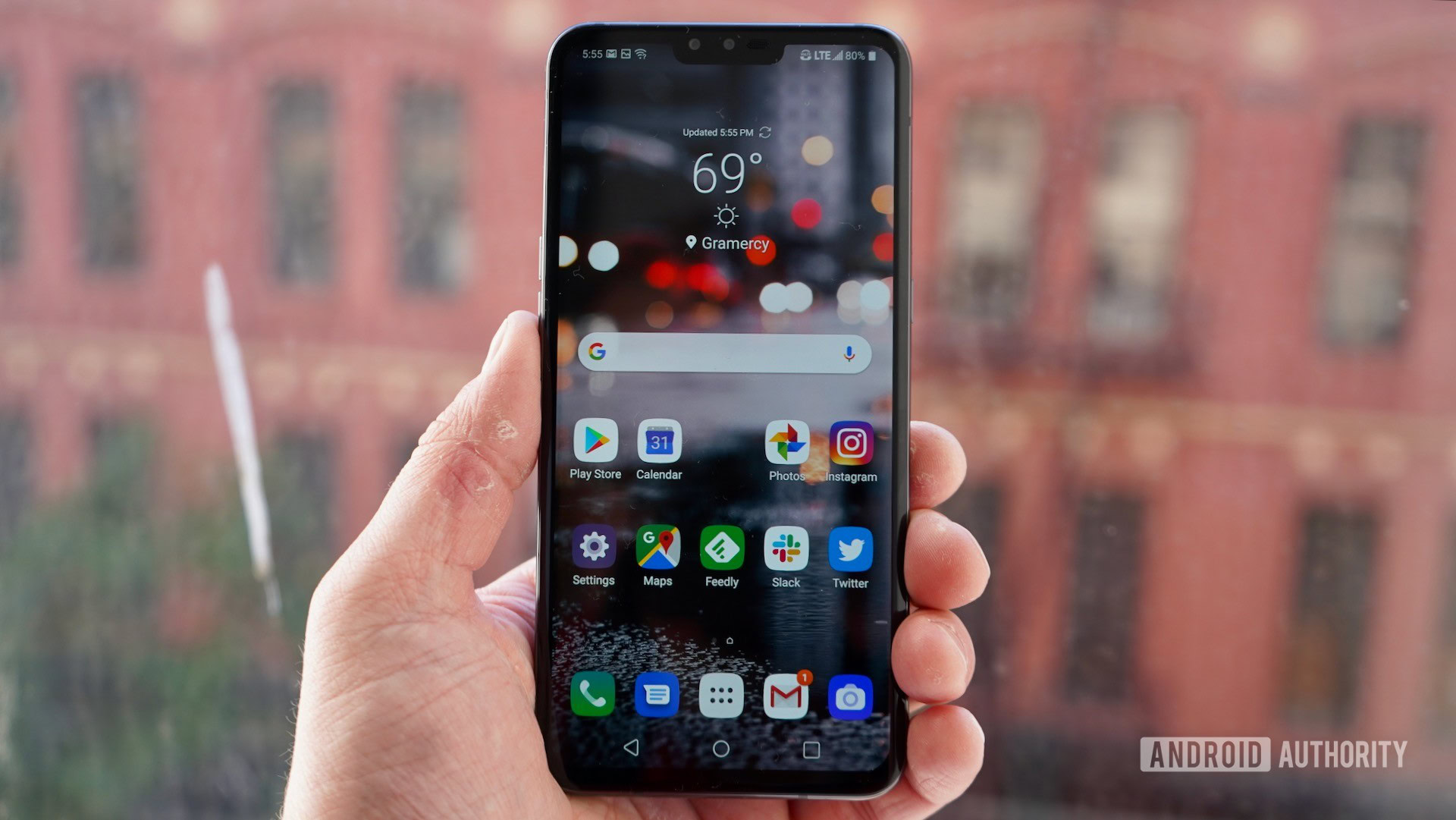
LG has not made a truly distinctive smartphone in what feels like years.
The glass panels are perfectly polished. In fact, this phone is overly smooth. It is among the most slippery handsets I’ve handled. It doesn’t like to sit still and will silently glide off any surface that isn’t level. Be careful where you put the phone.
It’s a big piece of hardware. You’ll find it’s about the same size as a HUAWEI Mate 20 Pro, or Google Pixel 3 XL. It’s smaller than the Galaxy Note 9. I don’t think it is too big, but the slippery glass makes it hard to use one handed. I often had to grip the V50 tightly in one hand and use the other to poke at the screen.
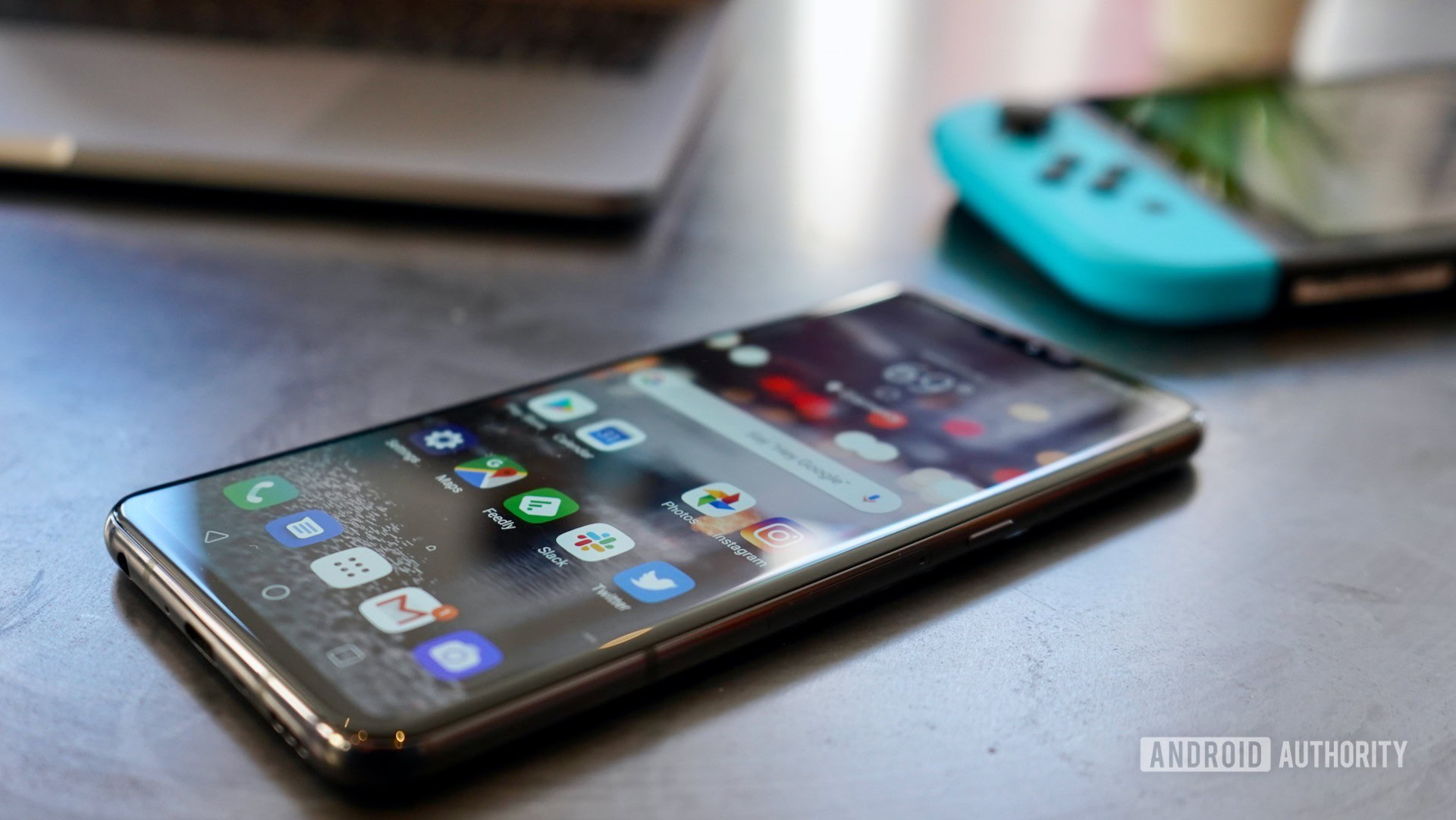
A dark gray finish gives the aluminum frame a smokey look. The frame wraps around the entire outer edge, which holds the majority of the controls and ports. The screen lock / power button is on the right side and is joined by the dual-purpose SIM card / MicroSD card tray. Separate volume buttons and a dedicated Google Assistant hotkey are on the left side. All the buttons are easy to find and offer perfect feedback.
The V50 ThinQ could easily be mistaken for nearly any other black phone.
The bottom edge features the USB-C port, speaker, and 3.5mm headphone jack. LG has been serious about supporting the headphone jack, particularly on the V series.
Glass stretches across the entire back surface. There is no camera bump and I’m happy about that. One neat touch. There’s a glowing 5G logo above the camera lenses. It pulses yellow when the display is on.
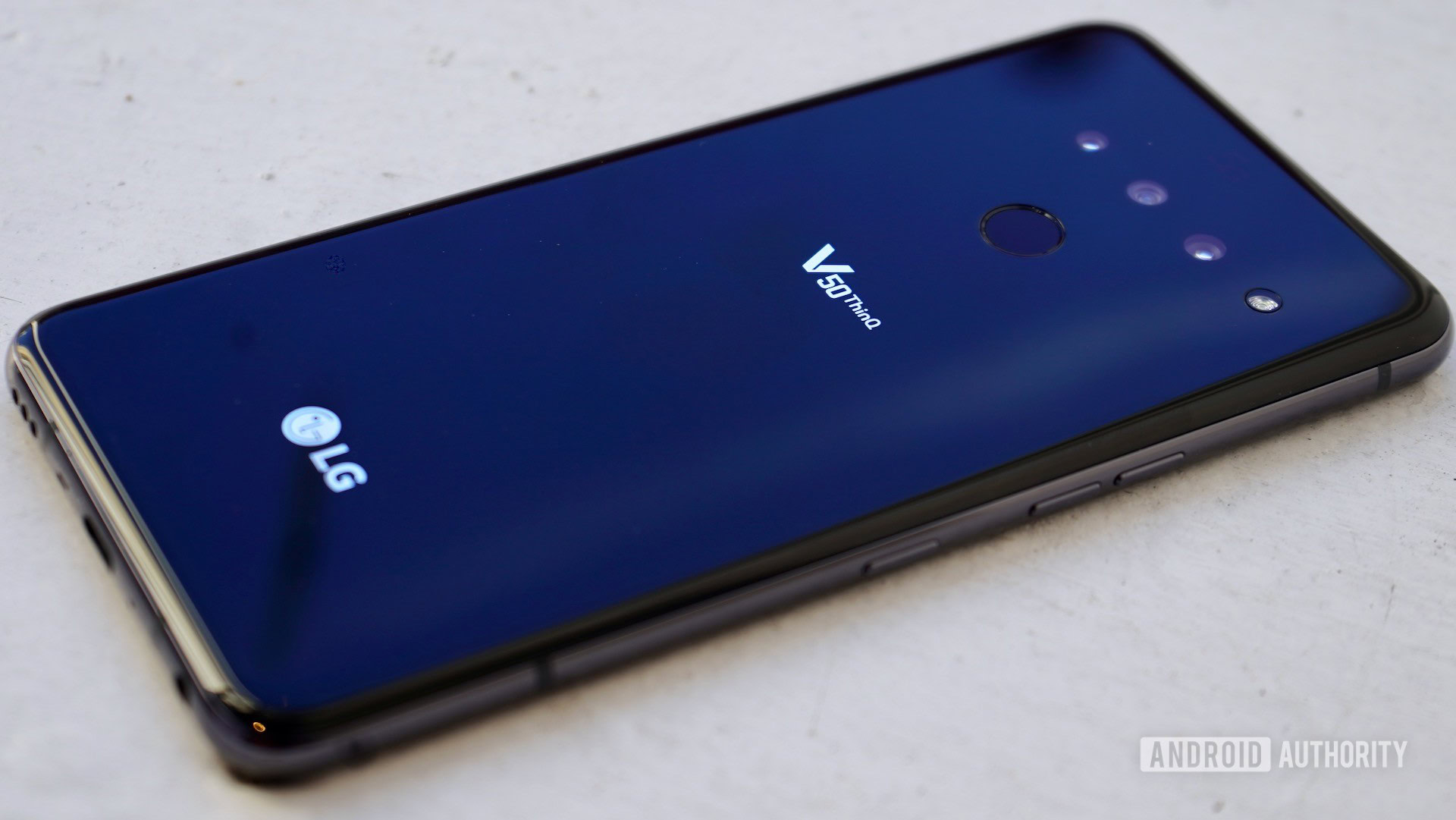
The fingerprint reader is located on the back, right where your index finger expects to find it. The reader was easy to train and worked reliably and quickly. Face unlock is available, but it’s a less-secure option that could be fooled by a photo. I’m surprised LG didn’t carry over the high-tech 3D face unlock from the G8.
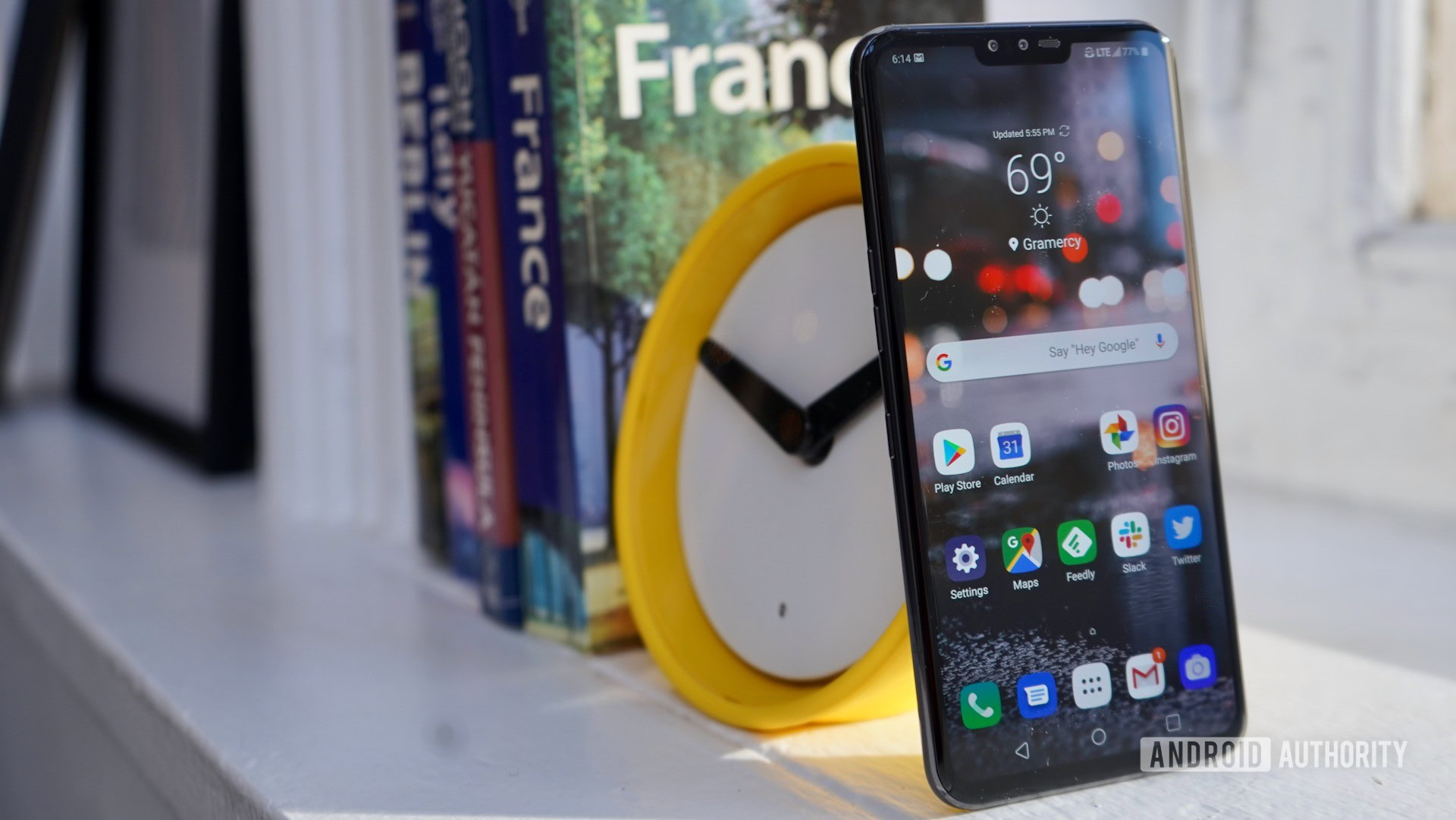
My biggest gripe with the hardware is that it doesn’t stand out. The V50 ThinQ could easily be mistaken for nearly any other black phone. I wish the phone were available in hot rod red or some more unique color. Otherwise, it’s a perfectly functional device that handles the must-haves in fine fashion.
Display
- 6.4-inch Quad HD+ OLED Full Vision
- 3,120 by 1,440 pixels, with 538ppi
- 19.5:9 aspect ratio
- Notch
LG makes excellent displays and the large panel that adorns the front of the V50 ThinQ is another such example. Thanks to the boat-shaped notch, the aspect ratio extends to 19.5:9. It’s a tall screen, though not as tall as Sony’s odd 21:9 panels.
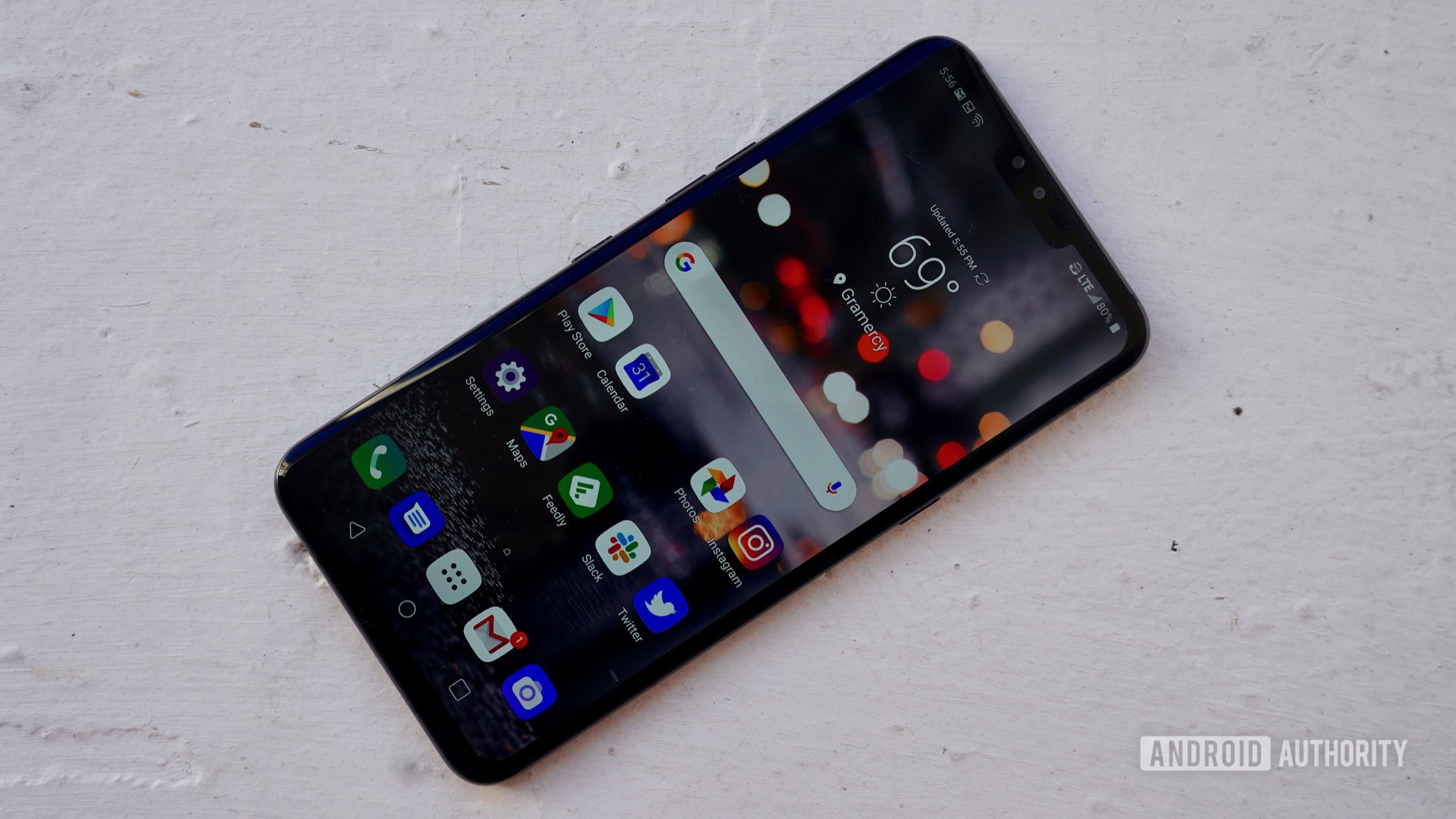
The screen emits pleasing colors, plenty of light, and incredible clarity. LG allows you to adjust the resolution: Quad HD+, Full HD+, or HD+. The latter two will save a little bit of battery life compared to the first. While your eyes can’t truly spot the difference between Quad HD+ and Full HD+, stepping the resolution down to HD+ does reduce clarity somewhat. Sticking to the middle option is likely the best balance for most people. What’s neat is you can set the screen to automatically switch from Full HD+ to Quad HD+ when you have high-quality content to watch.
Colors are accurate to the eye. Pure whites showed no hint of blue or yellow, and I didn’t see a color shift when viewing the screen from different angles. You can choose from several different color profiles if you wish to change the overall tone. Brightness is quite good. I was able to use the phone indoors and out without concern for the sun.
LG’s software includes controls over the blue light filter for keeping your eyes comfortable. You can also opt to hide the notch via software. This is an approach I have come to appreciate. LG calls it the New Second Screen.
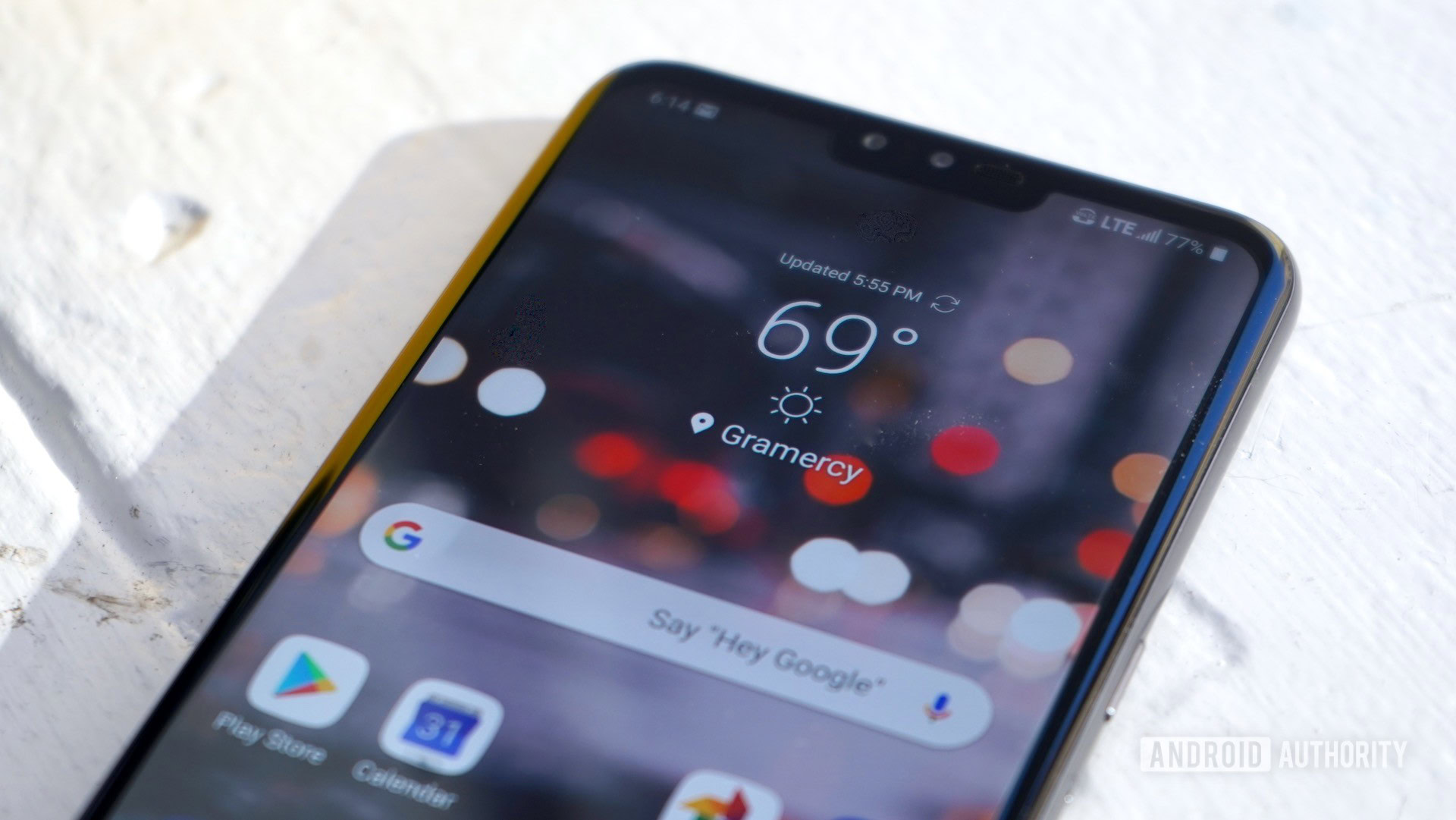
The LG V50 ThinQ has an excellent display that measures up to the competition.
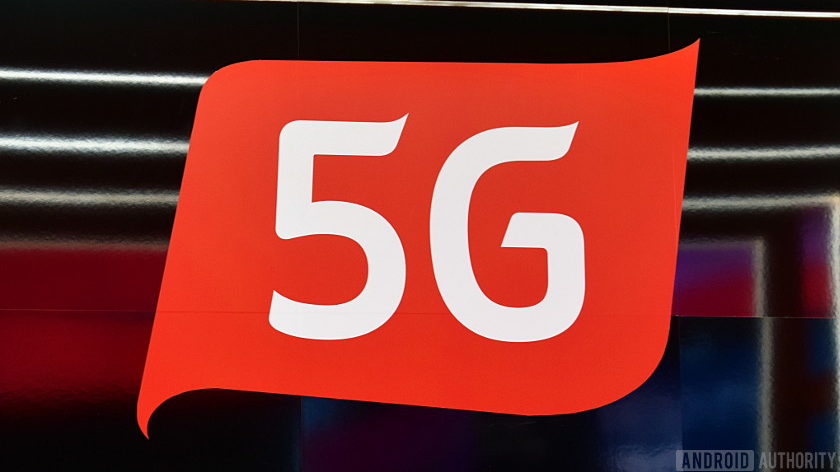
Performance
- Snapdragon 855 S0C
- 2.8GHz octa-core, 7nm process
- 6GB RAM
- 128GB storage
Qualcomm’s Snapdragon 855 delivers strong performance across the board. The V50 ThinQ may be limited to 6GB of RAM, where some competitors pack 8GB, but the phone still ran like butter. I didn’t encounter a single problem no matter what task I threw at it. Screen transitions were smooth, apps opened in an instant, and the phone never made me wait when using the camera or playing 3D-rich games.
Benchmark tests bore this out. The V50 ThinQ delivered crushing results. On Geekbench 4, it nabbed 3,473 for single core and 11,029 for multicore; and on 3DMark, it scored 5,596 on OpenES GL 3.1 and 4,724 on Vulkan. These results put the V50’s performance ahead of 98 percent of all other devices in each benchmark’s respective database. In other words, the only phones that are faster likely also have the Snapdragon 855 under the hood.
The AnTuTu results, which rated 333,654, surprised me. These CPU, GPU, and memory tests put the V50 ahead of only 70% of devices.
Heat didn’t seem to be a problem. LG built a heat pipe into the device and it channels thermals away from the processor. This helps keep performance at its best.
If you live in a Sprint 5G market you can expect quick download speeds.
How fast is Sprint 5G on the LG V50?
You can expect to get quick download speeds. I tested the V50 on Sprint 5G in Dallas and saw average speeds in excess of 190Mbps, with peaks reaching nearly 700Mbps. Sprint's 5G isn't as fast as Verizon's 5G, but it is more widely available in the launch markets. You'll have to check Sprint's coverage map to find out exactly which neighborhoods have access.
Battery
- 4,000mAh lithium-ion
- Qualcomm Quick Charge 3.0
- Qi wireless charging
LG ticked off all the right boxes when it comes to the V50’s battery. It’s a large power cell that can be charged rapidly when plugged in, or wirelessly when dropped on a charging mat. I tested the battery in and out of 5G coverage zones and saw quite a stark difference between the two.
In areas that have only Sprint LTE 4G, the V50 ThinQ pushed through a day and a half without problem. Screen-on time varied a bit depending in the display resolution. I saw about 6 hours of screen-on time with the screen set to Quad HD+, 6.0 to 6.5 hours with the screen set to Full HD+, and 6.5 to 7.0 hours with the screen set to HD+. I always used the phone with all the radios on and the display set to auto-brightness.
When tested on Sprint's 5G network, I destroyed the battery entirely in about five hours.
When I tested the phone on Sprint’s 5G network, I destroyed the battery entirely in about five hours. I saw it drop from 100 percent to 30 percent in that short timespan. Keep in mind, I was using it extensively to run speed tests on the network, and I had the screen set to full brightness much of the time. Still, I haven’t seen a battery plummet that quickly since the early days of 4G.
The phone powers up quickly via the included charger. Plug it in for 15 minutes and the battery will jump by 30 percent, giving you hours of additional use.
Qi-based wireless charging is on board, too. The phone is compatible with most wireless chargers sold today and was able to recover its charge fairly quickly.
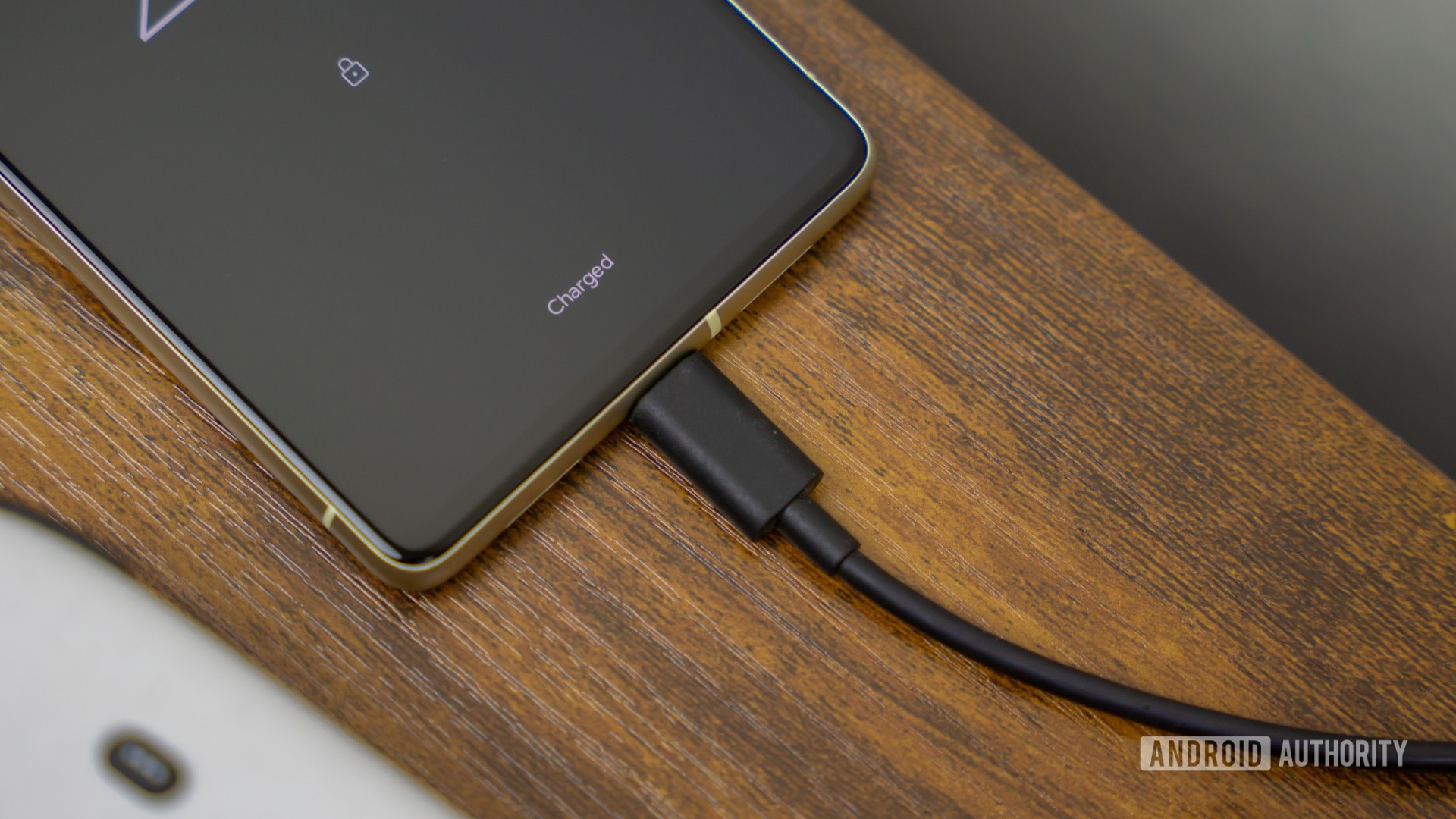
Camera
- Rear Cameras:
- Standard: 12MP, f/1.5, OIS, EIS
- Wide-angle: 16MP, f/1.9, OIS, EIS
- Telephoto: 12MP, f/2.4, OIS, EIS
- Front Cameras:
- Standard: 8MP, f/1.8
- Wide-angle: 5MP, f/2.2
You want cameras? The LG V50 ThinQ has cameras. Three on the back and two on the front, to be specific. Like the current flagships from Samsung and HUAWEI, the LG has standard, telephoto, and wide-angle lenses on the rear. These are joined by standard and wide-angle selfie cameras on the front. The idea is to give people the greatest possible range of shooting options. This is the norm for a modern flagship.
LG ported its fine camera app from the G8 to the V50 ThinQ. It pops open with a double-press of the volume-down key. Core shooting modes include auto, AI cam, portrait, studio, and manual. The portrait tool allows you to dial in the blur in real time.
Three little boxes at the top of the screen let you switch rapidly from the telephoto to the standard, to the wide-angle lenses. If you’d rather dial in the exact amount of zoom, you can still pinch your fingers on the screen. The software will seamlessly switch to the proper lens. A strip of controls on the side of the viewfinder makes controlling the flash, adding filters, or adjusting the settings a snap.
The V50 ThinQ has two selfie cameras, a standard 80-degree lens and a second 90-degree lens. This secondary shooter lets you take wider selfies. See below.
I found the camera app to be a little slow to lock in focus, but this is an ongoing issue with LG phones. I noticed the same thing on the LG G8. Once the app snapped the shot, it was quick to process and save the image so you can return to shooting.
In general, the photos are solid. I wouldn’t say they’re up to Galaxy S10, P30 Pro, or Pixel 3 levels, but they aren’t terribly far off. Sunny scenes give the sensor lots to work with and colors look really nice. White balance was sometimes off, and you can see the red flower below blew out the sensor a bit.
Sharpness was hit or miss. Sometimes the camera dialed in focus perfectly and other times it left my subjects a little soft. Noise is also an issue at times. You can see some compression artifacts in the dark areas of some photos.

I wouldn't say photos are up to Galaxy S10 or Pixel 3 levels, but they aren't terribly far off.
The portrait and studio modes do a fairly good job with bokeh-style shots. The edge between subject and background was never perfect, but at least it didn’t come across as comical. The studio tools let you play around with lighting to give your portraits a little extra something.
LG skimped out on the night mode. Where Google, HUAWEI, and others have created dedicated night modes for better night photography, LG says people who wish to brighten up a night shot can simply dial up the exposure. This isn’t the best solution and the photos turn out a grainy mess. LG could have done much better.
Video options abound. The phone can shoot slow-motion and time-lapse, as well as HDR10 in real-time. This gives video a bright, vivid look with lots of contrast. You can record up to 4K video at 60fps, which is really smooth.
The V50 ThinQ is a fine shooter, though not an extraordinary one.
You can see full resolution photos samples here.
Audio
- 3.5mm headphone jack
- 32-bit Quad-DAC
- Bluetooth 5 with aptX HD
- Stereo speakers
If LG does anything right with its phones, it is to give them incredible audio performance. The V50 ThinQ has stereo speakers when you combine the earpiece at the top and the woofer on the bottom. The sound isn’t perfectly balanced — the woofer woofs louder — but it’s effective enough when casually watching YouTube clips.
The headphone jack supports a 32-bit quad DAC with DTS:X Virtual Surround. This means you get a top-notch experience when using wired headphones (or plugging into a real stereo system.) LG’s software makes it possible to select preset EQs or dial in your own. I particularly like the DTS:X effect when watching movies.
LG has further refined its far-field voice recognition so the phone is better able to hear and understand you from afar. This works surprisingly well in noisy spaces.
Bluetooth 5.0 with aptX HD is available for your best Bluetooth headphones.
If you’re into capturing audio, you can take advantage of the HD audio recorder and select between concert, normal, and custom modes. There’s a lot to fool around with. The audio sounds very good.
Last, of course, Bluetooth 5.0 with aptX HD is available for your best Bluetooth headphones. The sound quality via Bluetooth was excellent.
Software
- Android 9 Pie
Out of the box, the V50 ThinQ runs Android 9 Pie from Google, along with LG’s user interface skin. In mid-January 2020, global unlocked V50 units began receiving the update to Android 10. The UX feels natural in some ways and heavy-handed in others. Naturally, you can adjust it to suit your own preferences.
I like that you can opt between a home screen with or without an app drawer, whether or not your Google Feed appears as the left-most home screen, and whether the settings menu is arranged in tabs or a list. If you’re at all familiar with Android, you’ll find plenty of familiar behaviors.
The dedicated Google Assistant button has two functions. A single press launches Assistant, and a double press shows your info feed, much like what you see on a Pixel phone sitting on Google’s Pixel Stand. Some may balk at the dedicated hardware for Google, and I did accidentally press it quite often.
The UX feels natural in some ways and heavy-handed in others.
As always, LG lets you configure your own set of taps to wake or unlock the screen, install themes, and rearrange the app drawer.
Important to note that LG does not have the best track record for software updates. The company is only just now pushing Android 9 Pie to last year’s G7 and V40 phones. If you’re anxious to see what’s new in Android Q, you’ll be better served with a Pixel.
Specs
| LG V50 ThinQ | |
|---|---|
Display | 6.4-inch POLED FullVision 3,120 x 1,440 resolution 538ppi 19.5:9 aspect ratio |
SoC | Qualcomm Snapdragon 855 Mobile Platform with Snapdragon X50 5G Modem |
GPU | Adreno 640 |
RAM | 6GB |
Storage | 128GB MicroSD expansion up to 2TB |
Cameras | Rear cameras: 16MP super-wide lens (ƒ/1.9 aperture/ 1.0μm pixels/ 107 ̊ field-of-view) 12MP standard lens (ƒ/1.5 aperture/ 1.4μm pixels/ 78 ̊ field-of-view) 12MP telephoto lens (ƒ/2.4 aperture/ 1.0μm pixels/ 45 ̊ field-of-view) Front cameras: 8MP standard (ƒ1.9 aperture/ 1.12μm pixels/ 80 ̊ field-of-view) 5MP wide (ƒ2.2 aperture/ 1.12μm pixels/ 90 ̊ field-of-view) |
Audio | Quad DAC Stereo Boombox 3.5mm headphone jack |
Battery | 4,000mAh Qualcomm Quick Charge 3.0 |
Durability | IP68 MIL-STD 810G |
Biometrics | Face recognition Fingerprint sensor |
Network | 3G 4G LTE-A 5G |
Connectivity | Wi-Fi 802.11 a, b, g, n, ac Bluetooth 5.0 NFC USB Type-C (USB 3.1 compatible) |
Software | Android 9 Pie |
Dimensions and weight | 159.2 x 76.1 x 8.3mm 183g |
Colors | ASTRO Black |
Value for the money
- LG V50 ThinQ 6GB of RAM, 128GB of storage: $999
Update December 20: The phone is now available nationwide and the full retail price has dropped $150. Moreover, Sprint’s 5G network has expanded quite a bit since launch. Bottom line, device makes much more sense as a purchase now. In fact, it’s one of the cheaper 5G handsets available at the moment — as long as you’re a Sprint customer.
At launch, Sprint sold the LG V50 ThinQ only in the markets where its 5G service is available. This has since changed. The phone is now available to Sprint customers nationwide. That’s good news for LG and good news for people who like LG’s V-series phones.
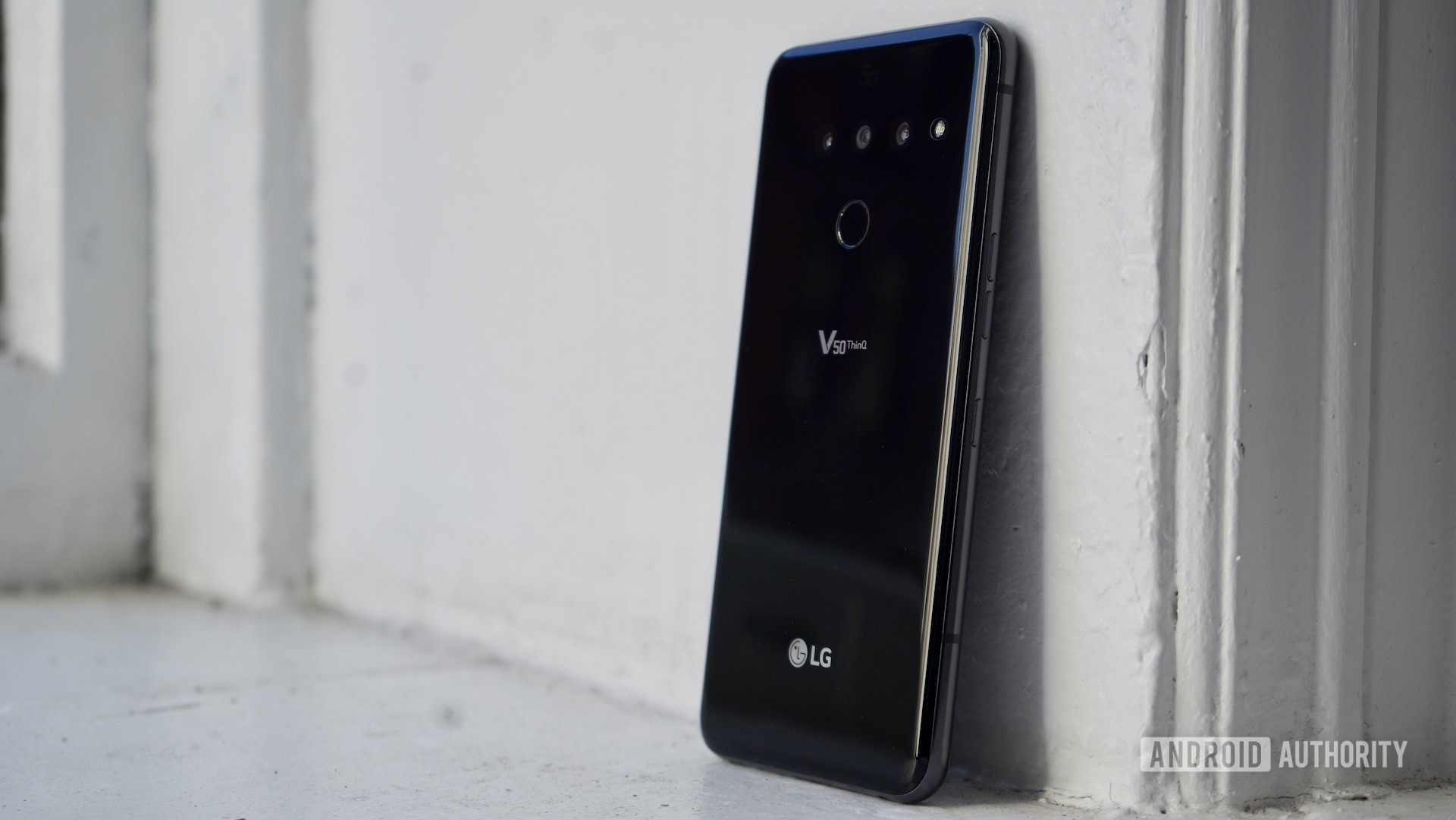
The full retail price has dropped a tick from $1,149 to $999. That’s about $42 per month for 24 months. However, Sprint is clearly interested in getting people signed up for its 5G service (and/or its unlimited plan.) The company is offering the phone for a half-price lease of $24 per month. You have to subscribe to a 5G service plan in order to get that lease price, and the lease lasts a lengthy 18 months.
Sprint’s 5G plan, called Unlimited Premium, costs $80 per month per line. It includes unlimited data, talk, and text, Hulu, Amazon Prime, Twitch Prime, TIDAL HiFi, and 100GB of 4G mobile hotspot. It’s a hefty plan and the $80 is a fair asking price.
Almost any phone is worth $24 per month. At that price, you can’t ask for much more given the V50’s selling points and overall performance. What’s not clear is how long Sprint will offer the affordable lease. Bottom line, the value is surprisingly good for the moment. Moreover, since launch Sprint has expanded its 5G footprint and the availability of the device itself.
LV V50 5G ThinQ Podcast review
Adam, Jonathan, and Eric sit down to. talk about the LG V50 ThinQ. Plus, Eric discussed his experience testing Sprint’s 5G network in Dallas, TX. We also get an interview with Richard Self, Director of RF Engineering for Sprint about deploying a 5G network!
LG V50 ThinQ review: The verdict
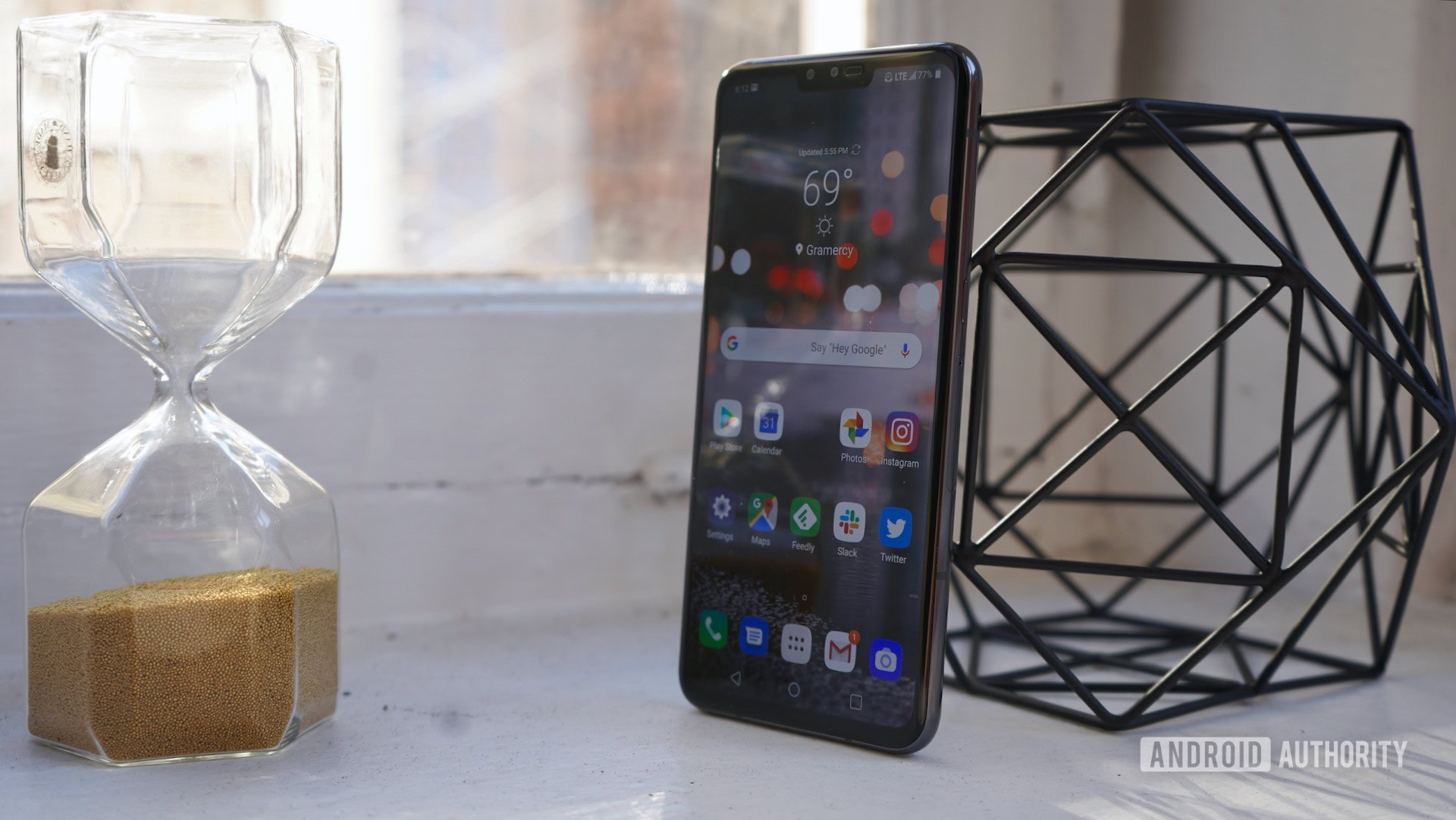
The LG V50 ThinQ may not have an inspiring exterior, but its performance is solid. It’s a well-made piece of hardware that covers all the bases a flagship should. I wish battery life in 5G zones were a tad better, and I wish the camera offered a little more pop. Other than these small blemishes, the phone does really, really well.
If you’re a Sprint customer in a 5G market (or not a 5G market), there’s no excuse to not buy this phone.
This concludes Android Authority‘s LG V50 ThinQ Review. Tell us what you think in the comments below.